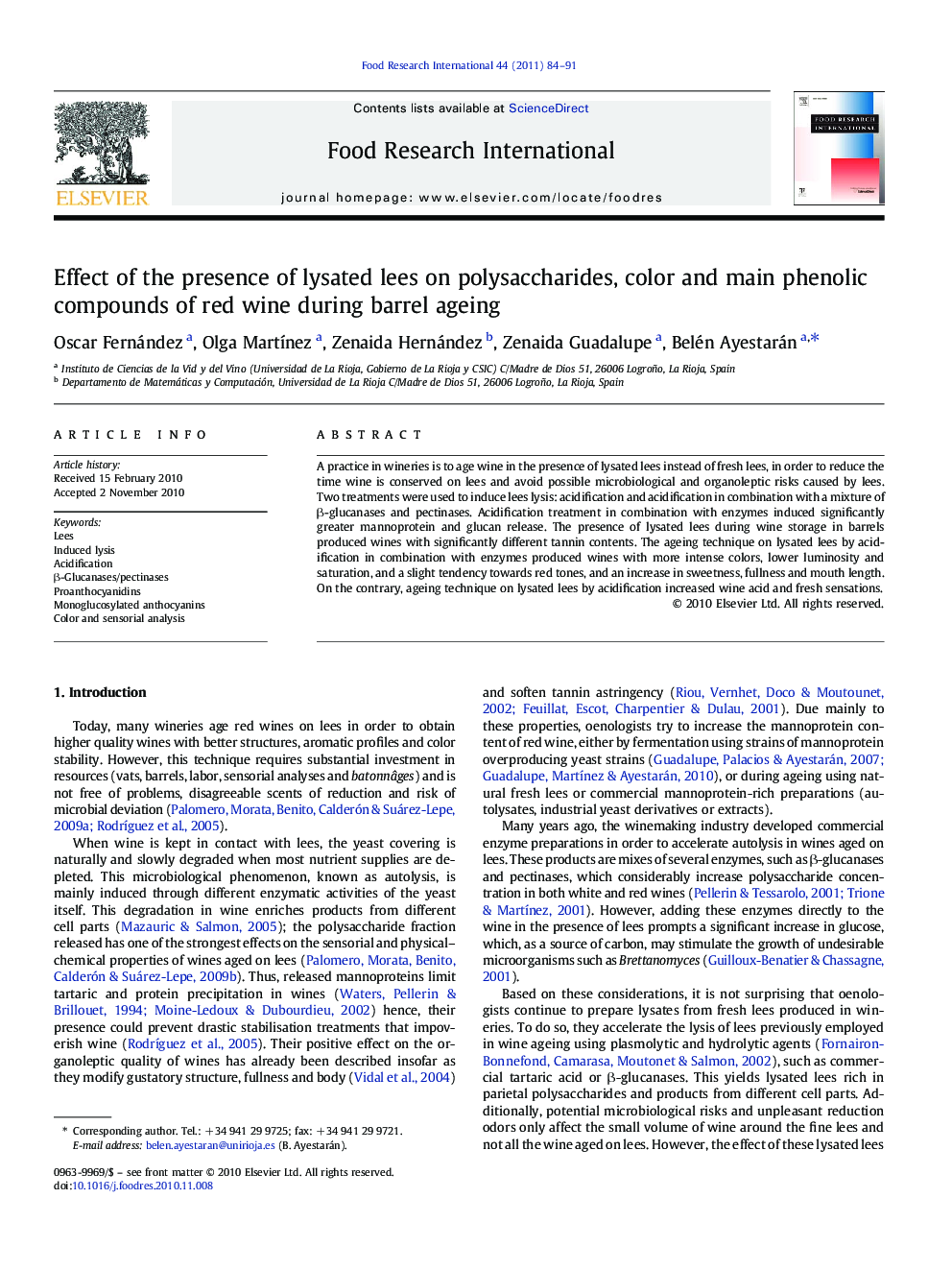| Article ID | Journal | Published Year | Pages | File Type |
|---|---|---|---|---|
| 6399896 | Food Research International | 2011 | 8 Pages |
A practice in wineries is to age wine in the presence of lysated lees instead of fresh lees, in order to reduce the time wine is conserved on lees and avoid possible microbiological and organoleptic risks caused by lees. Two treatments were used to induce lees lysis: acidification and acidification in combination with a mixture of β-glucanases and pectinases. Acidification treatment in combination with enzymes induced significantly greater mannoprotein and glucan release. The presence of lysated lees during wine storage in barrels produced wines with significantly different tannin contents. The ageing technique on lysated lees by acidification in combination with enzymes produced wines with more intense colors, lower luminosity and saturation, and a slight tendency towards red tones, and an increase in sweetness, fullness and mouth length. On the contrary, ageing technique on lysated lees by acidification increased wine acid and fresh sensations.
